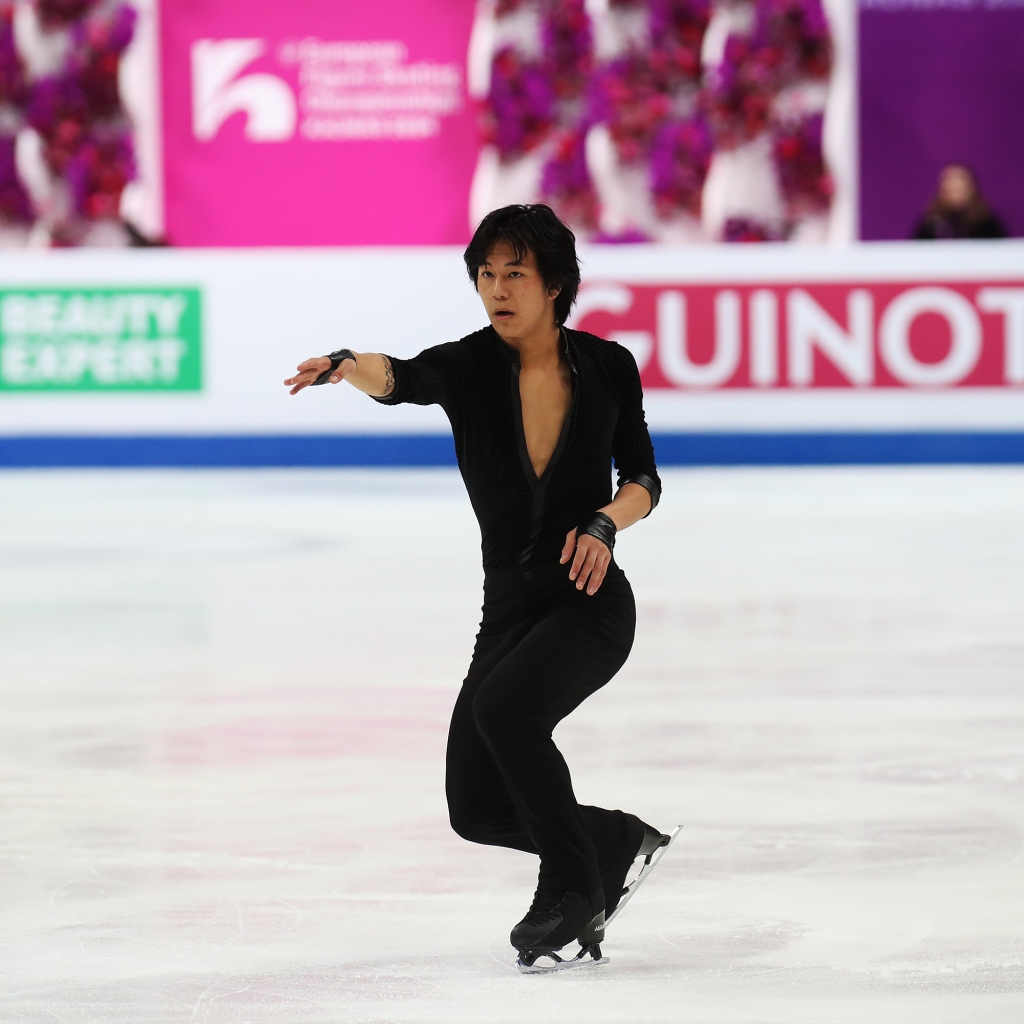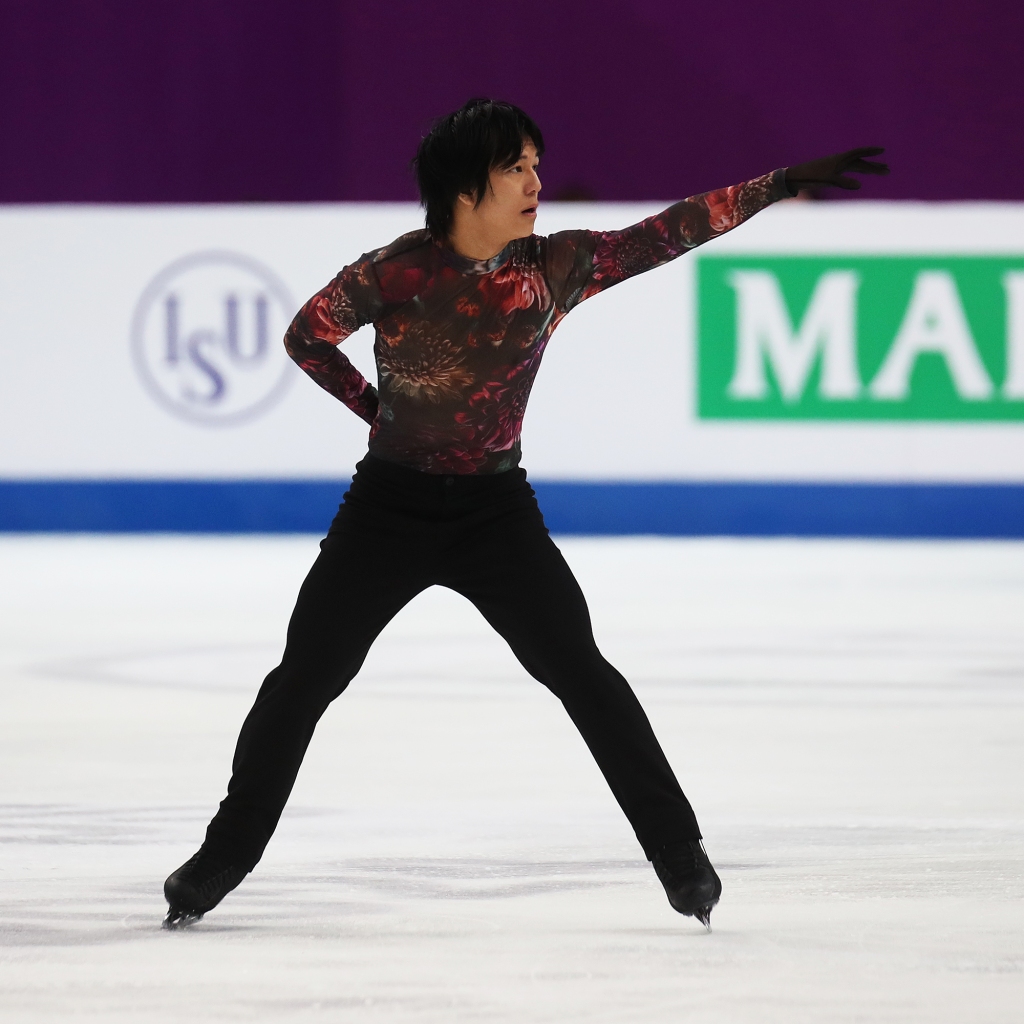By Hiro Yoshida
In Europe, Adam Siao Him Fa stands head and shoulders above his competitors. This month he gets to test his mettle against the rest of the world in Montreal, Canada.
The 2022-2023 season was a breakthrough for Siao Him Fa mining gold at the Grand Prix de France and European Championships. This season got off to a perfect start with him picking up titles at the Nebelhorn Trophy in Oberstdorf, Germany, the Shanghai Trophy in China and the Trophée Métropole Nice Côte d’Azur back home in France.
He was assigned back-to-back Grand Prix events and was widely predicted to find it tough to retain his Grand Prix de France title as he faced 2023 World bronze medallist Ilia Malinin and 2022 Olympic silver medallist Yuma Kagiyama in Angers. Siao Him Fa surpassed expectations to clinch a second consecutive gold at the event in the process becoming the first European man to surpass 300 points.
“The level was really high, but it was so motivating,” he said. “It was a big challenge for me. The fact that I was skating with the World medallist and Olympic medallist gave me a boost of motivation. I really wanted to push myself over my limits. It was such a beautiful competition because everyone gave his best and everyone fought with what they have.
“I knew that if I did my job clean, I had chances. I was not thinking that I can beat them because I wanted to focus more on my own performance. It was in a little space of my head, but I was trying to not think too much about it.
“I knew that I could arrive at 300 points. It’s a step that shows me that I have my place with the greatest skaters. I know that with this step, I can go even further and I can push more and more my limits. I know that I can go for even more.”

The following week Siao Him Fa vanquished two-time World champion Shoma Uno at the Cup of China in Chongqing to seal his spot at last December’s Grand Prix Final in Beijing. He was a disappointing fourth at the Grand Prix Final, but bounced back in January this year to win his second European title in a row. In between he added a second French national crown.
Siao Him Fa began skating in Bordeaux where he grew up as the youngest of four children. His parents hail from Mauritius. All of the children were involved in the sport with gradually increasing success from one sibling to the next.
“I have one big sister and two big brothers and we all did figure skating actually,” he said. “They gave me the inspiration. It’s quite funny because for each of us, the level went higher and higher. For my sister, it was more regional competitions and then a little bit of national ones. Then one of my brothers went to Nationals, and the other one to internationals. Now I went to the highest level. Maybe if my parents had a fifth child, they would be even better.”
Siao Him Fa has trained all over France. When the rink he trained at in Bordeaux closed, he moved to Toulouse at the age of 10. At 16 years old, he transferred to Poitiers to be coached by 2007 world champion Brian Joubert. Three years later, he switched training locations to Courbevoie on the outskirts of Paris for a year and a half. He is currently based in Nice and works with Cédric Tour, Rodolphe Marechal and Benoit Richaud.
“The weather is so good and the atmosphere is great,” he said.
Siao Him Fa puts down his improved performance this season to a reassessment of his skating after his somewhat disappointing finish at last year’s Worlds in Saitama, Japan.
“After Worlds was complicated,” he said. “I was injured. I took a month to rest, to heal myself and to think about how I can improve more and what I need to work on. When I went back on the ice, I prepared myself. I started by thinking last season was good, but next season has to be better. I worked really hard with my coaches, with my staff, the physical trainer, the mental coach, all the staff and even with Benoit. When we created the programmes, we had the base. Then I went to ice shows and the fact that I could skate with the greatest skaters, it was really inspiring, and really motivating . It helped me to have more confidence about myself and in which direction I should go and how I can improve my jumps and my skating. The fact that I could skate during the shows helped me to connect in a different way in a different atmosphere with the audience. It’s not competitions. It’s more relaxed, but I’m still trying to connect with the public. It’s a different way, but it’s really interesting to have worked on that during this summer. When I came back from Japan, I had so many things in my mind. I know on what I can work on. For the jumps, I need to take it easier to not think too much about it. For the choreo, I just need to let the music go and to relax. It helped me a lot and we continue to work really hard to improve the quantity and the quality of the training and I want to be stronger and stronger. I know that I’m not at my maximum. I know that I can do much more in training. But what I’m doing in training, I want to bring it on the ice in competitions. It’s going to take time, but I will make it.”

The work Siao Him Fa did over the course of the off season is reflected in his programmes for this season. His short programme is to “The Prophet” by Gary Moore, while his free skating is to “Departure (Home)”, “The Quality of Mercy”, “Mercy (Voiceless Mix)” by Max Richter and “Refuge” by Power-Haus and Ros Stephen. The selections showcase a newfound maturity in his skating.
“This year we wanted to show that I grew since last year,” he said. “I’m more mature and we wanted to show that I can skate more. We chose to bring some theme in the programmes that helped me to express them. For the short programme, it’s blues, which is something new for me, but I really enjoy to skate to that music. It’s just so powerful and it’s also calm. It feels like my soul is going out of my body. The theme of this programme is dancing with a ghost. My body is held by the music, and I’m just letting the music go and I’m dancing without control. For the free skating, it’s more complex. During the programme, we wanted to show that I’m sharing a whole story. The theme of the programme is my diary. I’m writing my own story. That’s why at the beginning there’s the typing machine and paper with a pen writing. The beginning of the program is pretty sad. We go through multiple emotions. At the beginning, I don’t know how to express my emotions and I don’t know how I want to write them. I destroy the paper, and I restart it until I find a good way, in good words. It’s a programme about life, the beauty of life. That’s why we chose flowers for the costume. We wanted to show that this whole programme is a development from the beginning until the end, and just like a flower, it evolves with the whole story. At the end of the programme, it’s more powerful, more joyful, and I feel relieved and free and happy about the whole story that I made.”
Siao Him Fa’s story this season has seen him cause a stir by the inclusion of a back flip in his free. The element is illegal and warrants a mandatory two-point deduction. He perfected it during the course of last summer and included it for the first time in competition at the Shanghai Trophy. However, it was at this year’s European Championships in Kaunas, Lithuania that it generated the most media coverage.
“I learned the backflip on my own off ice first. I worked with my coaches and we made it really secure. They helped me to not fall on my head and we made it so it was the safest. It was the safest way to learn it, first off ice, then on the ice. Of course, like everything we worked from the beginning, like a triple Axel. We went step by step. For the backflip, it was the same. When I felt confident enough, I just went for it.”
Siao Him Fa omitted the back flip at his Grand Prix events, including the Grand Prix Final, due to the potential ramifications of a two-point deduction when the competition is so close and every point is vital. He would like the powers that be in the sport to allow skaters to show more creativity and he does not believe the back flip is any more dangerous than the technically demanding elements skaters are attempting currently.

“I want to bring something new to our sport and it’s been more than twenty years since someone did one in a programme,” Siao Him Fa said referring to Surya Bonaly’s back flip at the 1998 Olympics in Nagano, Japan. “I think that today with how our sport has improved, there are so many things I would say are as dangerous. It’s risky, of course, but everything is kind of risky. When we can see skaters like Ilia (Malinin) landing a quad Axel, it shows that our sport doesn’t have limits, and we should not put down those limits. We should let the skaters go and be creative. The more we bring some new things, like the cartwheel, the jumps, some funny tricks, we’re going to bring something new to our sport and it’s going to be more unique. Each skater will have his own trick, his own personal touch.”
Siao Him Fa feels that the back flip is in fact less challenging technically and physically than the jumps he and his competitors routinely perform.
“To be honest, what is difficult with the backflip is the fear you go through when you jump backwards and you have your head upside down,” he said. “In reality, it doesn’t take a lot of energy compared to a quad Lutz, even compared to a triple or double.”
And will the back flip make an appearance in Montreal?
“We’ll see,” he smiled. “It’s a surprise. That’s what is funny. Even I don’t know when I will put it in the programme.”
